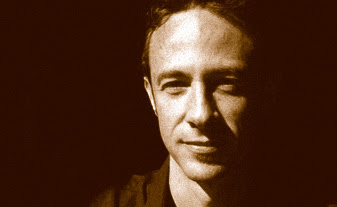Interview with Darius Himes, Lead Judge of Photography.Book.Now Competition
 The Photography.Book.Now International Juried Competition is an international juried self-published book competition, and a celebration of the most creative, most innovative, and finest photography books – and the people behind them. Now in its second year, Photography.Book.Now offers photographers of all stripes the opportunity to showcase their work to a world-renowned panel of judges, and take a shot at a $25,000 grand prize. Submit your book by 12:00 pm PDT on July 16, 2009. For more information, visit www.photographybooknow.com.
The Photography.Book.Now International Juried Competition is an international juried self-published book competition, and a celebration of the most creative, most innovative, and finest photography books – and the people behind them. Now in its second year, Photography.Book.Now offers photographers of all stripes the opportunity to showcase their work to a world-renowned panel of judges, and take a shot at a $25,000 grand prize. Submit your book by 12:00 pm PDT on July 16, 2009. For more information, visit www.photographybooknow.com.
See what kind of photography books make the cut – check out the Photography.Book.Now 2008 winners. You can also see current submissions to the 2009 competition.
Before you enter the competition, read the following interview with the lead judge of the competition, Darius Himes (pictured), co-founder of the photography publishing company Radius Books – he might leave you encouraged to create and/or submit your own book.
What is the current state of self publishing of photography books?It’s blowing up! Just check out Blurb’s press release about the exponential growth they experienced last year (and the fact that they are up for another Webby Award this year). If this one company is an industry indicator, then I would say that the “state” is healthy and vitalized.
How can self publishing help a photographer grow?
Photographers are being extremely creative in how they utilize the print-on-demand technology to self-publish photography books. Some are building books as portfolio pieces designed to get the attention of advertising agencies and reps. Others are producing limited runs of Blurb books and selling them with a print as a mini-limited edition art object. Still others are producing fully realized books based on long-term photographic projects and selling them either directly to a hungry public, or presenting them as book proposals to more traditional publishing houses.
I was at the AIPAD fair in NYC last month, and I ran into a well-known photographer who related a fascinating story: he was in the process of working with a publisher, aiming for a release date at Paris Photo last fall. The publisher fell behind and so rather than anguish over this fact, he simply made a short-run version of the book with Blurb, printed off a set, small amount of copies and sold those at the event. The publisher loved the ingenuity and it garnered more interest for the forthcoming title!
Is there diversity in the photography book industry?
Immense. Think of how varied and fractured the music industry has become over the past 20 years. Same thing has happened with art and photography book publishing.
What is the Photography.Book.Now judgment process like? What will you be looking for in submissions? How will you guide the other judges?
Originality and strong photography housed in a beautifully considered, well-designed book. That’s what the judges will be looking for. It’s impossible to state any sort of formula for making winning work, but there were 6 criteria that we asked the judges to consider when looking at the books last year. They included cover design, strength of the photography itself, the subject matter as an individual element, the layout of the pages, the editing and sequencing of the book, and the overall impact of the book on the viewer. The winning books definitely took all of these things into consideration. And these criteria will be used again this year.
This is your 2nd year on the Photography.Book.Now judges panel. Is there anything you felt was missing from last year’s submissions that you’d like to see this year?
Honestly, there was nothing lacking in last years’ submissions. It was an overwhelming response. I’d like to see MORE great work, MORE considered designs, MORE youthful energy and ingenuity, and MORE serious projects submitted. We had some of all of those things last year. And I’m sure we’ll get more this year. The one thing that many photographers haven’t spent time considering is just how to incorporate text—and what the content of that text should be—elegantly and convincingly into the book format. Being aware of all of the component parts is a big part of what makes a book successful.
What advice would you have for someone considering entering the competition?
It’s the same advice I give to anyone looking to produce a book of their work. First, go out and really look at art and photography books. Take note of all of the diverse elements such as typographic treatment, how images sit on the page spread and how text is treated in relation to the imagery. Ask yourself whether the proportion—the trim size—of the book is appropriate to the images, and whether the subject matter feels significant to you. All of these questions need to be addressed in the conceptualizing stage of making a book of photographs. And lastly, get the advice of your friends, colleagues, fellow design and photography professionals as you’re working on the book. Two heads is better than one as they say, particularly when it comes to bringing together the art of photography with the design and craft of books.
STAY IN TOUCH
Get updates on new photographer interviews plus news on contests, art shows and informed commentary on what’s happening with diversity in photography. Subscribe to Dodge & Burn Photography Blog: Diversity in Photography by Email
Follow me on Twitter @mestrich for more on photography
You must be logged in to post a comment.

+ There are no comments
Add yours